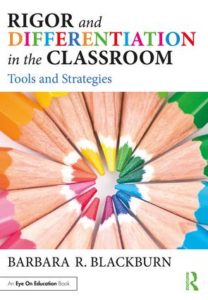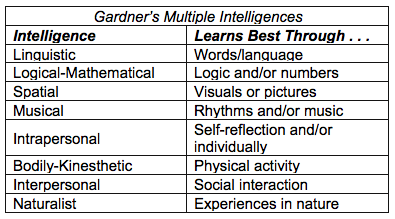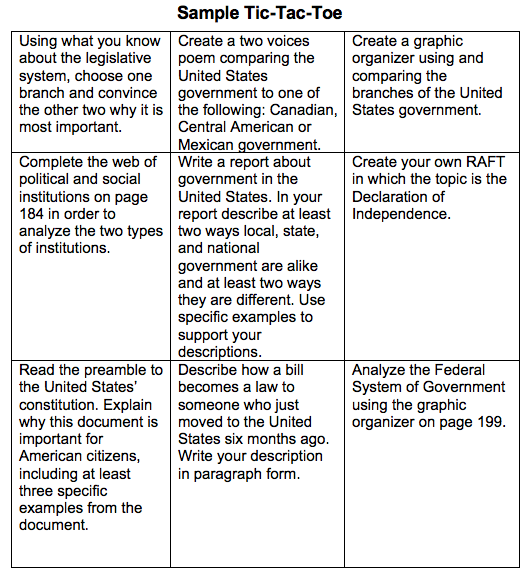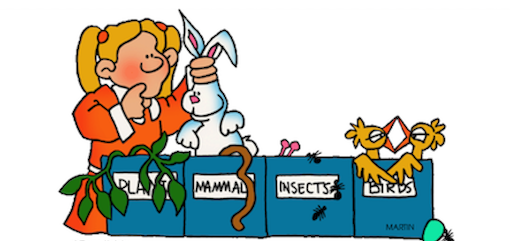3 Ways We Can Offer Students More Choice

If you would like to empower your students, give them choices. According to Scott Keller, a senior partner at the global leadership firm McKinsey & Co., having the ability to choose our own focus makes us five times more committed to the outcome. If students are more invested in their work, they are more likely to learn.
We can provide choices in several ways: in what they learn, how they learn, and how they demonstrate learning. First, despite an era of standards and accountability, students can be given choices in what they learn.
For example, if you are studying landforms or biomes in science, students could pick one to study and then become an “expert teacher” sharing their information with other students. This is a great alternative to you teaching all the landforms or biomes.
Let students explore how they learn best
You can also allow struggling students to make choices about how they learn. In Frames of Mind: The Theory of Multiple Intelligences (1983), Howard Gardner first proposed eight intelligences, or ways people learn most effectively.
It is important to note that, according to Gardner and many educators who work with his list, multiple intelligences differ from learning styles, which have been generally dispelled. Once you understand the different intelligences, you can use them to create activities that will enhance learning for your students.
I once met with a teacher who told me that this means you should find out each student’s type of intelligence, and then only teach them lessons in a way that matches that intelligence. Not only does that run counter to Gardner’s own explanation, I find it to be limiting and unrealistic for today’s classrooms.
Instead, incorporating activities that address various intelligences allows students to construct deeper knowledge by seeing the concept through the different intelligence lenses.

A third option is to provide choices in how students demonstrate information. Kendra Alston, former Academic Facilitator at Kennedy Middle School, learned how important choices are when she was a student in a high school social studies class.
Kendra wasn’t excited to study the 1920’s and 1930’s, but her teacher Mr. Baldwin told them he was giving a show me what you know final exam. Alston explained:
“He didn’t care how you showed it, as long as you showed what you knew. Things flashed before my eyes, but I was into theatre. So I researched the vaudeville circuit at the time and found Bessie Smith in theatre. She was a blues singer who sang in speakeasies; and I learned about the 20’s and 30’s through her eyes. On day of the exam, I came in singing, stayed in character (others did essays, etc.). He asked questions and I answered based on what Bessie Smith would have said. It’s the only way I got through it.”
It can be as simple as Tic-Tac-Toe
I liked using a Tic-Tac-Toe grid with my struggling students. For a particular unit or topic, I provided nine choices of activities they could use to demonstrate their understanding. They chose three to complete. You can also incorporate Bloom’s Taxonomy or Webb’s Depth of Knowledge into the assignments. And, of course, include digital apps and tools to take advantage of your classroom tech and address various intelligences.
I was recently in a classroom where one of the teachers had a tic-tac-toe posted on the wall. The nine choices were “Things to Do When You Finish Your Work.” The teacher shared that there were appropriate and inappropriate actions when you finish what you are working on. Then she discussed options with her students, and together they created the poster. That’s a nice adaptation that incorporates choices and desired behaviors.
A Final Note
Incorporating choice in your classroom is an effective way to motivate and engage your students. Provide choices in what they learn, how they learn, and how they demonstrate learning, and watch them grow in their learning.
References
Keller, S. (2012, April 26) Increase your team’s motivation five-fold. Harvard Business Review.
Gardner, H. (2013, October 16) Multiple intelligences’ are not learning styles. Washington Post.
NOTE: To learn more about how MI theory is being used in schools today, visit the Multiple Intelligences website supported by Dr. Thomas Armstrong, author of Multiple Intelligences in the Classroom, 4th Edition (ASCD, 2018).
Illustrations: Phillip Martin





































